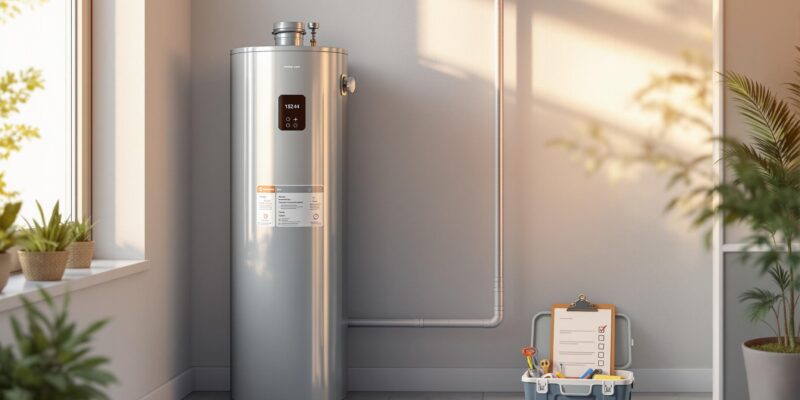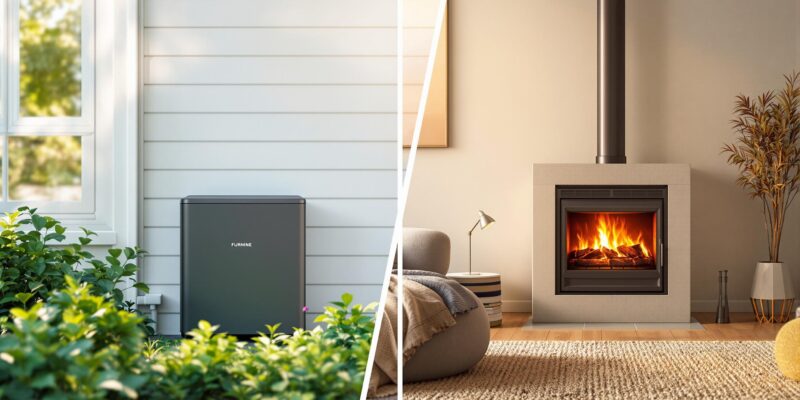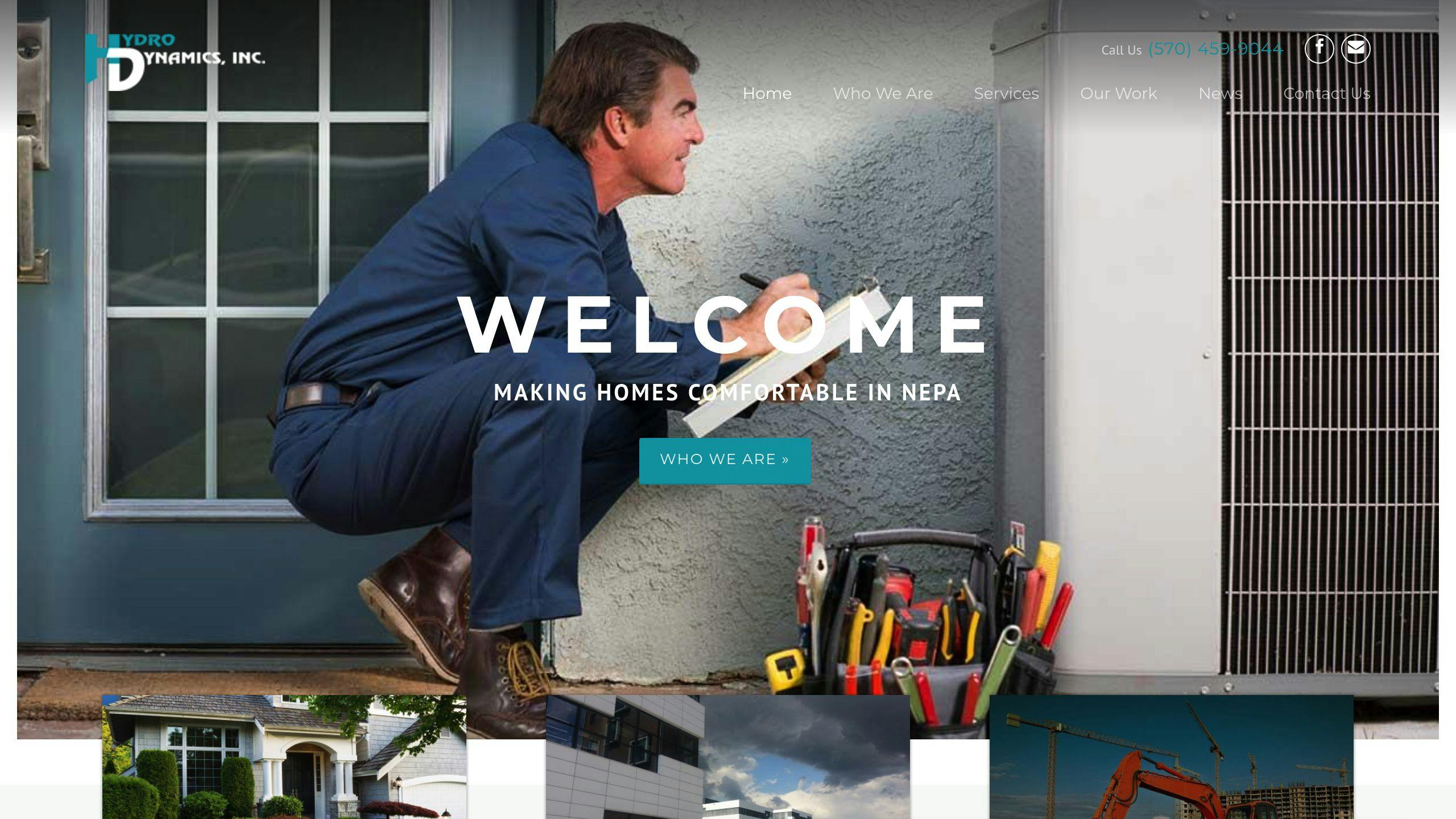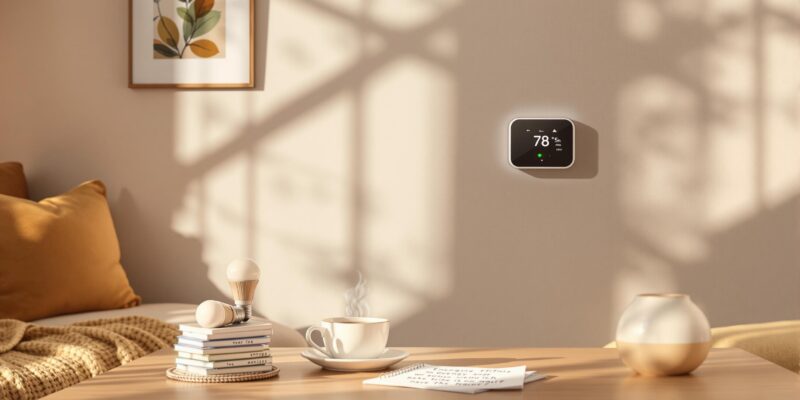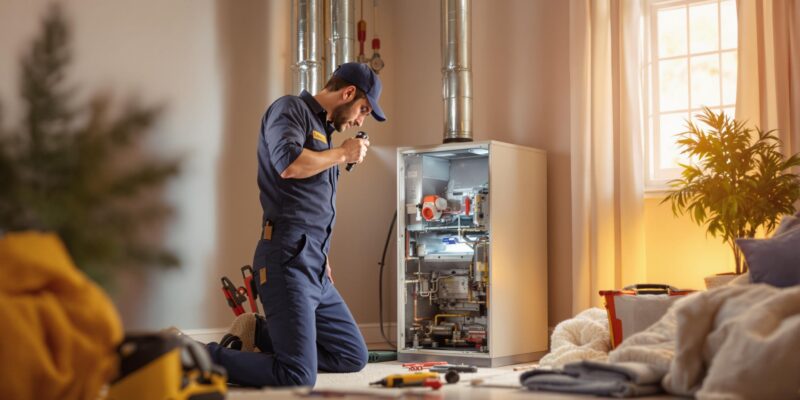Best Practices for Industrial Heating Controls
Want precise temperature control, lower energy costs, and reliable heating systems? Industrial heating controls are essential for maintaining efficiency and product quality in industries like food processing, manufacturing, and more. Here’s a quick guide to the best practices:
- Digital Controls: Achieve ±1% temperature accuracy, reducing waste and improving consistency.
- Regular Maintenance: Routine inspections and calibration extend equipment life and prevent breakdowns.
- Proper Heater Sizing: Match heater size to the space and requirements to avoid inefficiencies.
- IoT Integration: Real-time monitoring and predictive maintenance streamline operations.
- Building Management Systems (BMS): Automate energy use and optimize performance.
Key Technologies: Tools like PID controllers, solid-state relays, and thermal cameras enhance precision, safety, and reliability. Regular maintenance and safety protocols, including overheating protection, are critical for long-term performance.
Ready to optimize your heating systems? Keep reading to learn how to implement these practices effectively.
PID vs. Other Control Methods: What’s the Best Choice
Best Practices for Effective Heating Control
Following proven strategies can help industrial heating systems work efficiently, stay reliable, and minimize energy use.
Use Digital Temperature Control Systems
Modern digital controls offer precise temperature management, maintaining accuracy within +/- 1% even at high temperatures. This helps reduce energy waste and ensures consistent product quality, which is crucial for smooth operations and meeting production standards [1].
Regularly Calibrate and Inspect Sensors
The performance of temperature sensors directly affects the entire system. Routine professional checks help maintain sensor accuracy and ensure everything runs smoothly [4]. Aim for regular calibration, quarterly inspections, and bi-annual testing of key components to keep the system dependable.
Ensure Proper Heater Sizing and Placement
The size and positioning of heaters play a big role in system performance. Consider the size of the area, temperature requirements, and any obstacles. Undersized heaters may struggle to reach the desired temperature, while oversized ones can lead to energy waste from rapid cycling [3].
Leverage IoT for Smarter Heating Systems
Smart heating systems powered by IoT provide real-time monitoring, allow for remote adjustments, and offer tools for predictive maintenance and performance analysis.
Connect Heating Controls to Building Management Systems
Integrating heating systems with a Building Management System (BMS) helps optimize performance by factoring in variables like occupancy and weather. This enables automated adjustments that can significantly cut down on energy use [2].
These practical steps lay the groundwork for improving heating control and making the most of cutting-edge technologies.
Advanced Technologies in Industrial Heating
Modern industrial heating systems use cutting-edge tools to achieve impressive precision and efficiency. These advancements in heating controls directly improve how systems operate, the quality of products, and overall reliability.
Solid-State Relays and PID Controls
Solid-state relays are a step up from mechanical switches. They switch faster, last longer, and work seamlessly with PID (Proportional-Integral-Derivative) controls for precise temperature management. Together, they adjust heating power with speed and accuracy, ensuring steady performance, reducing energy waste, and extending the system’s lifespan [1].
Infrared Thermometers and Thermal Cameras
Non-contact tools like infrared thermometers and thermal cameras make it easier to detect and resolve heating issues early. Infrared thermometers allow quick temperature readings without contact, while thermal cameras give a detailed view of system performance. These tools help teams identify hotspots and avoid potential failures.
The benefits of these advanced technologies include:
- Longer equipment lifespan
- Reduced maintenance requirements
- Improved energy use
- Consistent product quality
- Reliable system operation
Maintenance and Safety Guidelines
Keeping heating systems well-maintained is key to running them efficiently, avoiding breakdowns, and ensuring safety. Maintenance and safety protocols are especially important for advanced systems using technologies like PID controls and IoT, helping them perform at their best.
Install Overheating Protection Systems
Overheating protection systems play a major role in preventing equipment failures – studies show they can reduce failures by up to 70% [3]. These systems include features like automatic shut-offs, real-time monitoring, and smart alerts, all designed to safeguard equipment and improve safety. When integrated with Building Management Systems (BMS), they allow centralized monitoring and quick action to address potential problems [3].
Schedule Routine Maintenance Checks
| Maintenance Task | Frequency | Key Focus Areas |
|---|---|---|
| Routine Inspections | Monthly-Quarterly | Sensors, heating elements, control valves |
| Deep Cleaning | Semi-annually | Ducts, vents, filters |
| Component Testing | Annually | Control systems, safety mechanisms |
During maintenance, it’s important to focus on:
- Unusual temperature changes, which might signal sensor or system issues.
- Energy usage patterns to identify inefficiencies.
- Physical wear, such as corrosion, leaks, or damage to components.
- Testing the functionality of control systems and safety features.
“Regular maintenance can reduce energy consumption by up to 30% and extend the lifespan of heating equipment by up to 50%. Additionally, overheating protection systems can prevent up to 70% of equipment failures” [3][1].
Training staff in system operations, safety protocols, and troubleshooting is also essential for effective maintenance. IoT sensors further simplify the process by providing real-time data and predictive insights [3].
Examples and Case Studies
These examples highlight how advanced industrial heating controls can boost efficiency and reliability across various industries.
Hydrodynamics’ Role in Industrial Heating
Hydrodynamics Inc., a trusted name in industrial heating since 1994, introduced an IoT-enabled heating control system for a pharmaceutical facility. The results? A 20% reduction in energy use, temperature precision within ±1°C, and 35% lower maintenance costs. This project showcases the impact of integrating smart control systems.
Efficiency Gains Across Industries
Industries of all kinds have seen measurable benefits from modern heating controls. For instance, a food processing plant using solid-state relays and PID controls achieved temperature accuracy within ±1% at 300°C, leading to better product quality and less waste [1].
“By controlling the voltage supplied to the heating element, operators can increase or decrease the kilowatt output, directly impacting the heat output.” – Secomak [1]
In the automotive sector, a manufacturing facility integrated heating controls with its Building Management System, resulting in:
- 15% lower energy costs
- Consistent temperature control, improving production quality
- Enhanced reliability through predictive maintenance
These examples highlight how advanced heating controls can cut energy use, improve product outcomes, and ensure system reliability. However, achieving these results requires proper system integration and regular maintenance, as outlined in earlier discussions.
Conclusion and Key Points
Technologies like PID controls, which can achieve ±1% accuracy at 300°C, and IoT-enabled integration with Building Management Systems (BMS) are transforming industrial heating systems. These advancements automate energy use, regulate temperatures, and ensure consistent performance, all while improving precision and efficiency [1][3].
Routine maintenance – such as inspections, replacing filters, and cleaning ducts – is essential to prevent failures and maintain optimal performance [4]. This upkeep supports the continued effectiveness of advanced systems like PID controls and IoT technologies.
“Regular maintenance can help stave off corrosion on the system, such as cleaning and changing filters” [4]
Overheating protection systems play a critical role by identifying issues early, preventing damage, and enhancing safety [3]. With modern thermal monitoring tools, temperature problems can be spotted and addressed quickly, reducing risks. Together, these elements form a solid approach to achieving efficient, reliable, and safe heating operations.
Key Factors for Industrial Heating Control
| Factor | Impact | Benefit |
|---|---|---|
| Digital Controls | ±1% precision at 300°C | Better quality, less waste |
| Regular Maintenance | Extended equipment life | Lower costs, higher output |
| Safety Systems | Early anomaly detection | Prevents damage, reduces downtime |
| BMS Integration | Automated energy regulation | Optimized energy efficiency |


